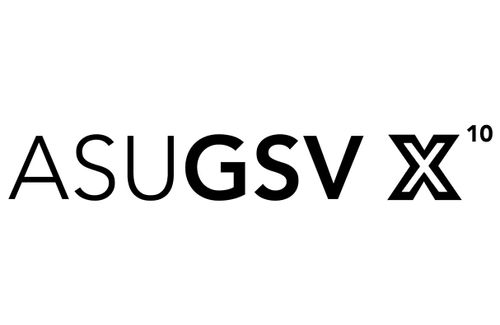Here is what Catalyte is doing to adapt to the new and changing impact of COVID-19.
Below you will find a note from our CEO Jacob Hsu along with specific steps we are taking to maintain the health of our employees and communities, while still delivering on client priorities. This post will be updated as circumstances change.
With the uncertainty surrounding COVID-19, we don’t know if remote work will be the new standard for days, weeks or months. As you progress with your remote workforce, you’ll start to learn what works for your company and culture, and where processes, tools and policies need to be modified.
Please reach out if you need someone to talk with about the best ways to manage remote workers. Our Surge division has navigated the challenges of remote workforces for over a decade. We’re here to share what we know and get everyone through this disruption as smoothly as possible.
Note from CEO Jacob Hsu
We are in new and unexpected territory as a company, a nation and a society. As we respond to the evolving impact of COVID-19, know this: We are here — and the company is here — to support the health, safety and long-term prosperity of our employees and their families. The decisions we make over the coming days and weeks will be made with that goal front and center.
What does this look like? We will go fully remote, including staff working at client sites, starting on Tuesday, March 17th. This was done under the best guidance of public health officials and is the most effective thing we can do as a company to ensure our collective health and the health of our communities.
With many of our developers and teams already working remote, or at least not on a client site, we have robust protocols in place to continue to deliver great work wherever we may be. We are confident in our ability to continue to operate and deliver on client priorities.
Finally, I want everyone to look out for and be there for each other. We talk about the great community and culture at Catalyte. That is something that persists even when we aren’t in the office together. It’s who we are as people. No virus is going to change that.
Keep in touch with your friends and coworkers. Call them. Check in on them. Commiserate and share your sense of anxiety, your fears or what you’ll do once this has passed. Don’t let physical isolation become emotional or psychological isolation.
Stay safe. Be smart. It is a pleasure working with such an incredible team of talented and dedicated professionals at Catalyte. We will get through this together.
– Jacob Hsu, chief executive officer
Preventative actions taken to minimize exposure and protect clients and employees
Catalyte’s robust work from home policy assures staff remains fully productive when working remote. Team members are equipped with laptops and secure remote access to systems necessary to complete their work and virtually participate in daily stand-ups and meetings.
We recognize that this is a dynamic time and are ready to respond to best meet evolving needs. Here are actions we are taking.
- Closing all offices effective 3/17/20. All employees will work remotely from home until further notice. This policy applies regardless of whether staff are based in one of our offices or at a client site.
- Communicating and encouraging CDC Guidelines on preventing the spread of Coronavirus Disease.
- Requiring all employees to register all their personal and business travel plans with their manager and the Human Resources (HR) Department.
- Discouraging employees to travel for business reasons unless absolutely necessary.
- Requiring employees returning from a country where the CDC has issued an active advisory or warning to not physically return to work or enter the workplace for 14 days.
- Requiring employees to work from home (WFH) if they show any type of sickness.
- Mandating that employees that test positive for COVID-19, or believe they may have contracted the virus, to contact HR immediately and not return to the workplace for 14 days or until they receive approval from a health professional.
- Requiring that all employees have a work from home agreement in place that has been approved by their manager.
- Requiring that all employees bring home all their necessary equipment (e.g., laptop, charger, etc.) to perform their job duties each night in the event we need to communicate that we will be shutting down our offices for an extended period of time during non-working hours.
- Limiting visitors to our offices, discontinuing large face-to-face group meetings and asking employees to wipe down their personal workstations with disinfectant wipes.
- Daily monitoring of CDC, Federal and local communications for updates and for recommendations related to COVID-19.
- Catalyte has also created a comprehensive Catastrophic Health Preparedness Plan that has been provided to senior leaders and managers.
- Plan includes protocol on how we will handle a possible shut down of our offices, and situations where a Catalyte employee tests positive for COVID-19.
Meeting client demand
- All employees have information on Catalyte’s Work From Home (WFH) process and expectations.
- Managers are working with each employee to ensure a WFHA has been created, and employees are able to meet all our WFH expectations (including the WFH setting).
- Managers are prepared to ensure employees are adhering to the organization’s WFH expectations.
- Defined communication plan for if/when we need to implement major preventative actions such as shutting down an office.
- Assigned primary and secondary office leaders with clear roles and responsibilities related to ensuring communication with employees and enforcing Catalyte’s preventative actions.
Working from home policy
- Indicate when employees are working from home on their work calendar (both for the client’s calendar and Catalyte’s calendar).
- Work using a client or company-issued laptop.
- Demonstrate a high level of responsiveness when communicating with coworkers or clients.
- Maintain a high level of performance, which is monitored by management.
- WFH work setting:
- Dedicated work space
- Private high speed internet
- Quiet environment
- Establish WFH availability (when employees will be available).
- Available communication channels (e.g., email, phone, text, Slack, etc.).
- WFH notification method (i.e., how and when the employee will inform their manager, supervision, and team they are WFH).


